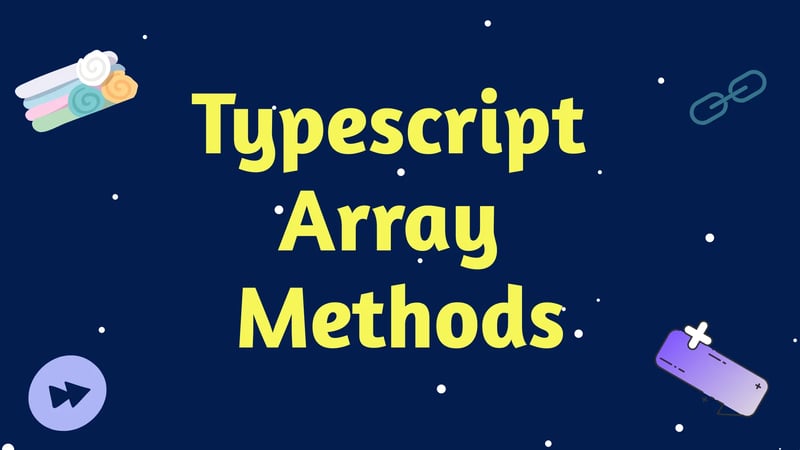In TypeScript, arrays are considered to be collections of single, “generic” types of values. All elements must be of the same type of data as prescribed in the array definition.
1. Defining an array
Array types can be inferred during the initialization of a new array.
In this example, the vowels array is inferred to consist of elements of type string:
const vowels = ['a', 'e', 'i', 'o', 'u'];
vowels.push('y'); // Ok
vowels.push(7);
// Error: Argument of type 'number' is not assignable to parameter of type 'string'.
Arrays can also be defined with the “generic” type of its elements already preset in two ways:
const vowels: string[] = ['a', 'e', 'i', 'o', 'u'];
// alternate way using Array class
const altVowels: Array<string> = ['a', 'e', 'i', 'o', 'u'];
2. Array Types
An array type consists of the type of values inside the array followed by square brackets [].
Arrays without any initial contents may be declared as that type to tell TypeScript what will later go into them.
In this example, dates doesn’t initially include a value, so declaring it as Date[] tells TypeScript what’s allowed in it:
const dates: Date[] = [];
dates.push(new Date('2021-12-1994')); // Ok
dates.push(10241995);
// Error: Argument of type 'number' is not assignable to parameter of type 'Date'.
3. Array Methods (Built-in):
TypeScript inherits JavaScript's built-in array methods.
Common methods include:
- push() - Add element(s) to the end.
- pop() - Remove and return the last element.
- shift() - Remove and return the first element.
- unshift() - Add element(s) to the beginning.
- concat() - Merge two or more arrays.
- slice() - Extract a section of an array.
- map() - Create a new array with transformed elements.
- filter() - Create a new array with elements passing a test.
- reduce() - Reduce an array to a single value.
- Many more! (Refer to JavaScript documentation for details)
4. Generic Arrays
Generics allow creating reusable array types that work with various data types.
Use angle brackets <> to specify the generic type placeholder.
function identity<T>(arr: T[]): T[] {
return arr; // Function works with any array type (T)
}
let numbers: number[] = identity([1, 2, 3]);
let colors: string[] = identity(["red", "green"]);
5. Advanced Array Features
Readonly Arrays: Use readonly keyword to create arrays whose elements cannot be changed after initialization.
Tuple Types: Define arrays with specific element types and fixed length at compile time.
let fruits: readonly string[] = ["apple", "banana"]; // Readonly array
let person: [string, number] = ["John", 30]; // Tuple (string, number)
6. Utility Types:
Explore utility types like Partial, Pick, for advanced array manipulation scenarios.



















